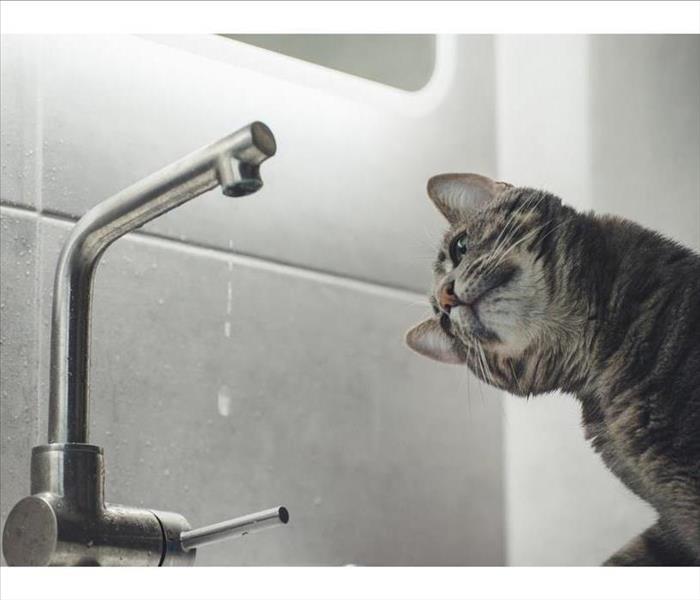Preventing Water Damage
5/28/2020 (Permalink)
There are many small and seemingly harmless things that can lead to water damage if left unattended. Slow drips, undetected leaks, standing water around foundations, cracked and chipped grout and caulking can be small leaks that lead to long-term water damage.
Leaking faucets
Repair or replace leaking faucets right away. Not only can a long-term leak raise a water bill, water can build up along the edges of the sink, onto the countertop and drip under the sink. Small leaks over time can cause mold and mildew, which are both health problems and expensive to remove. Sometimes entire areas of the affected structure need to be removed, such as the flooring and cabinetry under a sink.
Leaking toilets
Leaking toilets can contribute to black water contamination, one of the most serious kinds of problems. An old seal or a plumbing problem that causes a toilet to overflow, even a crack in a toilet, needs immediate attention. SERVPRO of Fernandina Beach/Jacksonville Northeast has the training and equipment to address black water damage.
Dampness under sinks
Check under sinks regularly for damp spots. Cracked pipes, loose fittings, rusted fittings and leaks can cause moisture to build up and spread. When the leak is slow and small, standing water may never be present so what would otherwise be an obvious sign of a problem isn’t present.
Grout and caulking around sinks, tubs and showers
Water can seep through cracks in grout and caulking. Missing chunks of grout and caulking, no matter how small, create places for water to pool and seep through into the walls or floor. Repair damaged grout and caulking at once.
Crawl spaces
Water, dampness and mold that are detected in attics, basements and crawl spaces between the ceiling and roof and under a building need immediate attention. Check these areas regularly, especially after rain and storms.
Standing water
Water that puddles and remains unchanged for more than a day when it is not raining needs to be checked. Certain types of soil drain slower than other types, but even then, standing pools of water should change and get smaller within 24 hours. If the puddle is not changing or is getting bigger, check for a broken pipe. Damp ground that is in contact with any structure long enough causes mold and other water damage.
Landscape watering
Small changes to landscaping and how it is watered can help prevent water damage. Avoid planting anything requiring frequent watering close to the house. We all think flowers look wonderful planted right against the house, but if those flowers require a lot of water to keep them alive, consider moving them to another part of the yard or using containers. Use drought-tolerant plants closest to structures. Make sure that landscape water doesn’t hit the exterior walls or run under the house. Plant slopes with drought plants. Leaving a slope bare or planting it with something with heavy water needs causes water runoff that can contribute to damp ground around or under a structure. If you use automatic irrigation, plan it so that drip-watered plants are not too close to the house and consider using well-placed misting heads instead of drip heads.
Anyone experiencing or suspecting water damage can contact us for an evaluation of the damage. SERVPRO of Fernandina Beach/Jacksonville Northeast is the trusted leader in the restoration of water damage. The staff has the training, equipment, and expertise to handle all restoration and cleaning needs and provides 24-hour emergency service. Call us at 904.729.2401.






 24/7 Emergency Service
24/7 Emergency Service
